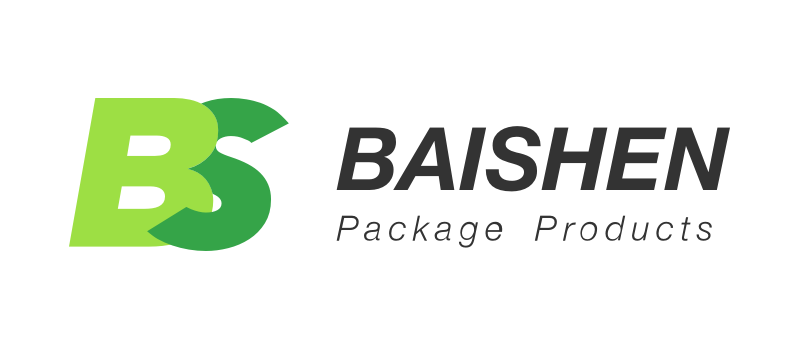Introduction
The snack market is a huge and volatile business in the global market, worth hundreds of billions of dollars, and with new and strong growth in prospects. The process of this growth is caused by the changing styles of consumer lives, a need to be convenient, and a greater variety of tastes, including both luxury and high-end healthy snacks. The entry into this market is a great opportunity, and it is an industry of fierce competition.
Starting a snack company is much more than having a special recipe or a brilliant idea. It is an intensive business affair that involves careful planning, thorough knowledge of the regulatory legal environment, and an effective approach to production, branding, and distribution. The operational nuances of the food industry, including supply chain management and inimitable rules of food safety, are not thoughtfully considered by several aspiring entrepreneurs.
This guide is a step-by-step, detailed guide on the process of launching your own snack business. We are going to break down the process of first ideation to scalable growth, featuring the pivotal moments between a hobby and a successful snack business. The mission is to offer a practical action blueprint to construct a viable and sustainable business in the competitive snack market.
Define Your Niche and Winning Snack Concept
One of the most important things a new business can avoid is trying to appeal to everybody. The contemporary snack market is not a single entity; it is a very fragmented group of micro-markets. The first strategic challenge that you have to undertake is to narrow down on what exactly you are going to serve and how you will serve it differently. This will involve preliminary market research.
Start with an analysis of existing trends. Do consumers incline to plant-based, keto-friendly, high-protein, or sustainability-source products? Is there a gap in particular categories, e.g., gourmet popcorn, artisanal jerky, or baked goods free of allergens? Examine what existing brands are and, more importantly, what they are not.
Out of this study, you need to discover a certain niche. A niche is a segment of the market that is clear and defensible. It may be founded on a dietary requirement (e.g, gluten-free), on a flavor profile (e.g., exotic spices), on a sourcing ethic (e.g., locally sourced ingredients), or upon a lifestyle (e.g., snacks for endurance athletes).
After having a niche, you need to identify your target market and target audience. Develop in-depth personas: What is this person? What do they value? Where do they shop? How sensitive are they to prices? Knowledge of this audience will guide all other decisions following it, such as product development to packaging design.
Lastly, crystallize your unique Selling proposition, or Unique Selling Proposition (USP). Why is your food product the better choice for the target audience that you have? Being different is not sufficient, but rather different in a manner that will be valued by your target consumer.

Craft Your Business Plan, Budget, and Legal Structure
Having your niche, target audience, and winning idea in mind, the abstract idea needs to be transformed into a real operational and financial document. There are three pillars in this stage, which include your business plan, your budget, and your legal entity.
The Business Plan: Your Strategic Blueprint
A solid business plan is the blueprint of your business; it will turn your business idea into a plan. This is not a document that is just meant to be used internally, but it is also necessary when getting the financing done with the banks or other prospective investors. The Small Business Administration (SBA) offers numerous opportunities to build a powerful plan.
In your business plan, you should have several elements:
| Component | Description |
| Executive Summary | A concise overview of the entire plan, written last. |
| Company Description | What your business is, its mission, its goals, and its competitive advantages. |
| Market Analysis | The research from the previous step, detailing the industry, your niche, target market, and a competitive analysis. |
| Organization & Management | Your team, their roles, and the corporate structure. |
| Product Line | A detailed description of your snack product(s), including formulation and sourcing. |
| Marketing & Sales Strategy | A detailed plan for how you will reach your customers (your go-to-market strategy). |
| Financial Projections | The core of the plan. Must include realistic financial projections (income statement, balance sheet, cash flow statement) for 3-5 years. |
The Startup Budget: Itemizing Your Costs
The startup costs budget is a critical section of your plan in the financial section. This involves itemizing the various costs that are possible at a granular level to know exactly the amount you will need to fund.
Note: The costs below are estimates for a small-scale startup in the US and may significantly change depending on your location, scale, and particular decisions.
| Cost Category | Examples | Estimated Cost Range (USD) |
| Legal & Licensing | Business registration (LLC), city/county permits, food handler permits, liability insurance (initial deposit). | $500 – $2,500 |
| Kitchen & Equipment | Commercial kitchen rental (deposit + first month’s rent/hours), small-scale mixers, sealers, scales. | $2,000 – $10,000+ |
| Product Development | Initial ingredient batches for testing, nutritional analysis (per SKU), initial packaging prototypes. | $1,000 – $4,000 |
| Branding & Marketing | Logo design, website development, product photography, business cards, initial online ad spend. | $1,000 – $7,000+ |
| Initial Inventory & Cash | First production run (ingredients + packaging), and 3-6 months of operating cash (cash flow) reserve. | $5,000 – $25,000+ |
| TOTAL ESTIMATED STARTUP | $9,500 – $48,500+ |
The Legal Structure: Protecting Your Business
Lastly, this phase involves you coming up with your legal structure. This ruling affects your liability, taxation, and administrative needs. A new small business can use an LLC as it is a popular option, as it offers protection in terms of liability, separating your personal assets from your business debts. It is strongly recommended to seek the services of a legal professional.
| Legal Structure | Key Consideration |
| Sole Proprietorship | Easiest to set up. No legal separation between you and the business. You are personally liable for all debts and legal actions. |
| Partnership | For two or more owners. Similar to a sole proprietorship, but liability is shared among partners. |
| LLC (Limited Liability Co.) | Highly common for small businesses. Provides a legal “shield” separating your personal assets from business debts. Offers pass-through taxation. |
| Corporation (C-Corp / S-Corp) | Most complex. A completely separate legal entity. Offers the strongest liability protection but involves more complex taxes and formalities. |
Developing Your Product and Sourcing Ingredients
In this phase, product development is about taking your idea and turning it into a marketable product. The difficulties lie in the areas of scalability and consistency. A recipe that is stellar in a home kitchen could disappoint when prepared on a much larger scale.
The first step is to finalize your formulation. This includes extensive testing to confirm that the product tastes the way it is intended to and maintains the desired integrity over time (shelf life). The quality of the product is the cornerstone of customer loyalty and thus, it deserves your utmost attention. For your recipe to reach perfection and to ensure shelf-stability, commercial scale production at consistent pricing should be sought; you might want to work with a food scientist.
The next step is to develop your supply chain. This includes identifying the suppliers for your ingredients, which is a key part of your operational strategy. For all key ingredients, you should identify primary and secondary suppliers to mitigate the risks of price fluctuations and supply shortages. This is also where quality control begins. The quality of your raw materials will determine the quality of the finished snack.

You also have to determine your production model:
1. Self-Production: You lease out a commercial kitchen and manufacture the product. This puts you in total control and is labor and time-consuming.
2. Co-Packer (Co-Manufacturer): This is where the manufacturer of other brands ships the production to a plant that specializes in producing such products. It is more costly, yet it has instant scalability and experience.
As a startup, the most viable way to start is usually to self-produce at a shared-use commercial kitchen, where you can control the quality and deal with other costs without having to make such large minimum purchases as co-packers would demand.
Navigating Food Safety, Licensing, and Labeling
This is perhaps the most critical and unforgiving stage in launching a food business. Risks associated with poor compliance could be fines, recalls, or a total business shutdown. Food safety is no longer about “learning-as-you-go;” it is a complex, multi-layered system with compliance on local production rules and federal product rules.
Initially, it’s local and state compliance that needs to be addressed, and that is primarily about where and how you produce your snack. Your first and most important call must be to your local health department. They govern all food production in your area. In most jurisdictions, it is illegal to produce food for commercial sale from a private home kitchen. The standard requirement is that you must operate out of a licensed and inspected commercial kitchen.
Some states have Cottage Food Laws, which let you sell certain low-risk foods like baked goods, jams, or dry snacks made in your home. Unfortunately, these laws are very restrictive. There are typically limits on your yearly revenue, and you cannot sell across state borders or to retailers like grocery stores. For businesses that want to grow, commercial kitchens are a must. After you get a commercial kitchen, your local health department will help you get a Food Facility Health Permit, make sure your entire staff has Food Handler’s Permits, and will work with your city to get a general business license.
Second, some states have Cottage Food Laws, which let you sell certain low-risk foods like baked goods, jams, or dry snacks made in your home. Unfortunately, these laws are very restrictive. There are typically limits on your yearly revenue, and you cannot sell across state borders or to retailers like grocery stores. For businesses that want to grow, commercial kitchens are a must. After you get a commercial kitchen, your local health department will help you get a Food Facility Health Permit, make sure your entire staff has Food Handler’s Permits, and will work with your city to get a general business license.

Designing Your Brand and Choosing Your Packaging
Once you have sailed through the legal conditions around your product you are now faced with the challenge of making a commercial case. Your snack has seconds in a congested aisle to impress, or not. The abstract promise you give to your customer is your brand, and it is your logo, your story, and your Unique Selling Proposition (USP). The physical, physical structure that brings that promise is your packaging. Your silent salesman and the most important touchpoint you possess.
Your packaging should passably fulfill three different and critical functions at the same time to be effective:
1. Product Protection and Safety: This is the practical role which cannot be negotiable. Your package should keep your product quality safe to oxygen, moisture and contamination. It has to ensure the freshness and integrity of your snack even between your kitchen and the hand of your customer.
2. Legal & Informational Compliance: The package is the avenue that will contain all the information that is deemed as required by law: your nutritional panel, ingredient list, allergen warnings and net weight.
3. Branding and Marketing: This is the trade activity. The package should serve as a shelf (or web based) beacon to your particular target audience. Its structure, feel, and shape should be able to send a message at first sight about the value of your brand and make you stand out among others.
The main concept that a startup faces is trying to locate a unique packaging solution that can perform all the three functions in a way that does not affect them. This is the area where flexible packaging (a stand-up pouch or roll stock) has emerged as the leading option in the contemporary snack industry.
It directly addresses all the three difficulties: on Protection, it is high-barrier film; on Compliance it is large printable area; and on Marketing it is a gorgeous 360 degree canvas where high-impact graphics can be created. In addition, it is small, and this fact lowers shipping expenses greatly, which is an essential consideration for a small startup.
Nevertheless, a final critical choice is introduced by choosing flexible packaging: your supplier. This is the point at which material science intersects marketing. The film to be used in drying roasted nuts is completely different to that of a moist jerky or an oily chip. This is something that a startup cannot afford to miss. You do not need a supplier but a partner. An expert such as a flexible packaging producer like Baishen Pack will know the peculiarities of food industry needs. They can guide the new businesses in making difficult decisions regarding the choice of materials, finishes, and print technologies. This arrangement will see to it that your final package is as convincing as it is safeguarding as well as optimised to a packaging machine once you are prepared to scale.
Custom Flexible Packaging : Built for Your Brand’s Success
✅ 10+ Years of Expertise: Since 2012, trusted by food, beverage & pet food brands worldwide.
✅ Certified Safety: BRC, ISO & SGS materials ensure food-grade quality and protection.
✅ Premium Printing: HP Indigo digital, flexo & gravure for vivid colors and precise detail.
✅ Fast & Flexible: Low MOQ, full customization, 7–10 day turnaround.
✅ Eco Options: Recyclable, compostable & bio-based films available.
Set Your Pricing and Go-to-Market Strategy
You now have a completed legally compliant and packaged product and the question now arises how you are going to price it and how you are going to sell it. Your pricing policy is the direct determining factor of your profit margins and the market position of your brand.
The pricing methods include several methods:
- ● Cost-Plus Pricing: Determine your total Cost of Goods Sold (COGS) including cost of ingredients, packaging and labor and mark up your desired amount. This will make it profitable but not necessarily consistent with the market.
- ● Value-Based Pricing: Pricing products through perceived value to your target market. A gourmet, organic or a narrow niche product can easily sell at a premium.
- ● Competitor-Based Pricing: Research the price that your direct competitors have and set your price at that level (below, equal, or over and above).
The combination of all three is a common characteristic of a successful strategy. You need to make profit with your expenses but your price needs to be justified by the market and correspond to the perceived value of your brand.
The distribution channel or go-to-market strategy of your product will determine where customers will purchase your product. This plan is a direct continuation of the market research that you have made in the first step.
1. Direct-to-Consumer (D2C):
- ● E-commerce: Selling on your own site (e.g., Shopify). This is the best in terms of profit margins but you have to do all marketing and fulfillment.
- ● Farmers Markets and Local Events: This is one of the best places to test and get a straight off feedback, as well as establish a local following.
2. Wholesale/Retail:
- ● Independent Retailers: Beginning with local retail shops, boutiques, delis, and specialty food stores.
- ● Big Box Stores: Growing regional or national groceries. This offers volume but at the cost of low margins and complicated distributor relationships.
The majority of brands begin with a local-first and D2C strategy and develop brand equity, then try the harder retail distribution channel.

Marketing and Scaling From Your First Sale
You possess a legally accepted product, obligatory packaging, a determined cost, and a distribution media. This time you need to push customers to that channel. A tremendous product will not sell itself. An effective snack company needs a marketing plan, which is planned and continuous.
You want to create awareness and develop a base of loyal customers. A digital-first strategy can be an effective choice, especially in the case of a food startup:
- ● Social Media: The latter is critical in a product that is visual, such as food. Good posts and videos on such channels as Instagram and Tik Tok can create a solid community.
- ● Content Marketing: A blog on your site can do your SEO and build authority. Talk about your ingredients, post recipes, or tell your brand story.
- ● Email Marketing: When you create an email list, you get a chance to communicate directly with your most active customers and provide them with promotions and loyalty.
Offline activities are also important:
- ● In-Store Demos: When it comes to the retail business, there is no better method of turning a browser into a purchaser than sampling.
- ● Public Relations: Send your product to local media, food bloggers, and influencers.
- ● Customer Service: This customer service leaves customers to become repeat customers and brand advocates.
Scaling is the final piece. With increase in sales you need to be ready to face the challenges of operation. This is one of perpetual adaptation. What you have been doing is making your products manually and you will change to using a packaging machine or co-packer. You will increase your line of products. You will keep track of your sales information to know what is performing and develop your strategy. Scaling is a never-ending reinvestment to your business to satisfy increasing demand.

Frequently Asked Questions (FAQ) about Snack Business
Q1: How much does it cost to start a snack business?
This is variable. A tiny startup, doing business under “Cottage Food Laws” (assuming there are any), at a farmer’s market, could start with as little as $1,000 to $3,000. But in the case of a business that wants to retail, begin in a commercial kitchen with proper branding, packaging, and insurance, the startup cost is between $10000- $50000 and it can be much more when buying equipment.
Q2: Is a snack business profitable?
It may be very lucrative though profitability will be strictly based on how you manage your profit margins. This translates to controlling your COGS (in ingredients, packaging, labor), controlling your operational overhead and sufficient sales volume. The snack market is highly competitive and usually runs at a low margin hence effective manufacturing and good pricing plan is important.
Q3: What is the most profitable snack to sell?
There is no one “most profitable” snack. Profitability has to do with a niche market that has exaggerated perceived value and low production costs. Gourmet popcorn, high-protein bars, and specialty cookies can be very profitable because the cost of ingredients is low, but effective marketing, branding, and positioning allow sellers to command high prices.
Q4: Do I need a license to sell snacks from home?
Generally, you are not allowed to commercially prepare snacks out of a non-inspected home kitchen. Certain states have Cottage Food Laws which offer an exemption to the low-risk foods but they are restrictive laws which limit what you are allowed to sell, the amount of money you are allowed to earn, and where you are allowed to sell (e.g. no online sales across state lines or sales to grocery stores). You have to consult your local health department.
Q5: What information is legally required for my snack packaging?
You are required to follow the FDA guidelines as elaborated in the guide. These are the Statement of Identity, Net Quantity of Contents, a complete ingredient listing in the order of decreasing weight, a clear declaration of the top 9 allergens entitled Top 9 Allergens and the name/address of the business. The majority of products also need a Nutrition Facts panel. Giving such comprehensive information is a legal provision.
Q6: How to market a snack business?
The most suitable one is a multi-channel marketing strategy. Begin with the digital fundamental: quality photos on social media (Instagram, Tik Tok), a content marketing web site with a blog, and an email list. Add to this offline activities such as face to face sampling at farmer’s markets or in store demonstrations, and develop a relationship with food influencers that fit your target audience.
Conclusion
A snack business is more than just selling a good recipe. It is a strategy, balance, and precision work. The process to go from an idea to a product on the shelf is a long road, which requires more than just passion: compliance, efficient production, financial control, and creative storytelling.
In this industry, success does not come overnight. It arrives after many iterations: perfecting your product, improving your operations, and cultivating customer relationships. Entrepreneurs succeed when they view each problem as a data point, every loss as constructive feedback, and each transaction as progress.
With a clear mission, dedication, and an openness to change, your business will not only thrive. It will compete and, one snack at a time, carve a permanent place on retail shelves.


